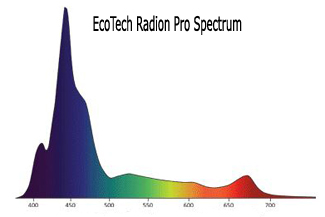So I jumped back into this hobby almost 2 years ago after being away from it for quite some time.
I purchased 2 viparspectra 165w LED fixtures for my 40 breeder. Shortly after getting back into the hobby I purchased a rainbow BTA from a local fellow reefer that he had under radion xr30's. The nem was stunning under the radions it had this radioactive glow to it. Get it home to my tank and it still looked good but did not have this pop to it.
Since then I have changed diodes in my fixtures about 6 times to try and achieve this. It never happen of course trying to replicate a radion on a light with 2 channels is going to be difficult.
I've done some talking to some local peeps and I had one guy tell me to add t5's to the front and back kinda of like a hybrid fixture. He said that my lights (viparspectra) do not produce a full spectrum and the full spectrum is what caused the corals and other things to color up.
So it got me thinking the radions have more of a full spectrum.
Is it true that LED units like the Viparspectras that do not provide a full spectrum do not encourage that color pop. While LED units that incorporate diodes that can provide the full range of color do?
In my case I have two options if this is true. Well these are the two options I am giving myself.
1. Mod my lights to have this full spectrum. Basically I would design a MCPCB and have it made where I could have 8 channels and then install high quality diodes in a similar ratio as the radions.
2. This option is what the guy recommended. Get a hybrid 4 bulb t5 fixture and supplement my LED lights with T5 .
@Dana Riddle I apologize for tagging you in this but I would love to have the advice of someone so highly regarded. I have yet to find a solid answer to this question of why there is that missing pop. The full spectrum argument makes sense to me though.
If this is the case adding t5 would be the inexpensive option minus the bulb replacement that has to happen. Redesigning my LEDS would cost more but even if I did decide to go this route I would still have less that what it cost's to buy one radion. Thanks in advance.
I purchased 2 viparspectra 165w LED fixtures for my 40 breeder. Shortly after getting back into the hobby I purchased a rainbow BTA from a local fellow reefer that he had under radion xr30's. The nem was stunning under the radions it had this radioactive glow to it. Get it home to my tank and it still looked good but did not have this pop to it.
Since then I have changed diodes in my fixtures about 6 times to try and achieve this. It never happen of course trying to replicate a radion on a light with 2 channels is going to be difficult.
I've done some talking to some local peeps and I had one guy tell me to add t5's to the front and back kinda of like a hybrid fixture. He said that my lights (viparspectra) do not produce a full spectrum and the full spectrum is what caused the corals and other things to color up.
So it got me thinking the radions have more of a full spectrum.
Is it true that LED units like the Viparspectras that do not provide a full spectrum do not encourage that color pop. While LED units that incorporate diodes that can provide the full range of color do?
In my case I have two options if this is true. Well these are the two options I am giving myself.
1. Mod my lights to have this full spectrum. Basically I would design a MCPCB and have it made where I could have 8 channels and then install high quality diodes in a similar ratio as the radions.
2. This option is what the guy recommended. Get a hybrid 4 bulb t5 fixture and supplement my LED lights with T5 .
@Dana Riddle I apologize for tagging you in this but I would love to have the advice of someone so highly regarded. I have yet to find a solid answer to this question of why there is that missing pop. The full spectrum argument makes sense to me though.
If this is the case adding t5 would be the inexpensive option minus the bulb replacement that has to happen. Redesigning my LEDS would cost more but even if I did decide to go this route I would still have less that what it cost's to buy one radion. Thanks in advance.


























